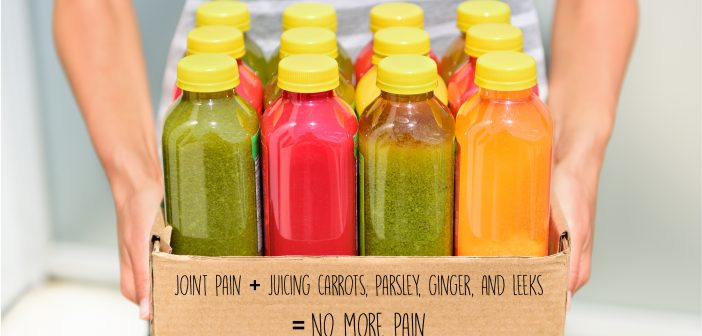As we get older, our bodies process food differently. We tend to have smaller appetites, chewing and swallowing can become more difficult, and preparing meals can become more of a challenge for a variety of reasons.
One trendy, healthy way to get added nutrients is through juicing. Whether you are a purist and press apples straight from the tree or rely on store-bought products to supplement your meals, juicing can be a healthy addition to your loved one’s dietary routine.
Eating whole fruits and vegetables is the best way to ingest nutrients as well as dietary fiber, but many older individuals are more likely to consume produce in inconspicuous liquid form. Best of all, vegetables like spinach, carrots, and kale can be incorporated into juice recipes without the consumer even tasting it. Flavors from the fruit you use typically overshadow those of the veggies.
Eating whole fruits and vegetables is the best way to ingest nutrients as well as dietary fiber, but many older individuals are more likely to consume produce in inconspicuous liquid form. Best of all, vegetables like spinach, carrots, and kale can be incorporated into juice recipes without the consumer even tasting it. Flavors from the fruit you use typically overshadow those of the veggies.
If you struggle to get your loved one to fit produce into their diet, juicing is a healthy and palatable alternative. However, there are a few things to consider when choosing the healthiest juice possible.
Choose your ingredients wisely.
Choose your ingredients wisely.
While there is no magical cure for all of the body’s aches and pains, natural nutrients in fruits and vegetables can be helpful in easing pain, reducing inflammation and bolstering immune system function. Certain varieties and combinations of produce can have both a targeted and overall beneficial effect on your body.
For instance, joint pain can be assuaged by juicing carrots, parsley, ginger, and leeks. Leeks and ginger are high in antioxidants and other vitamins and minerals that can help to reduce inflammation in the body. For a boost in immune and cardiac health, try a combination of pomegranate, orange, and garlic. Pomegranates lower cholesterol and blood pressure and increase the speed at which heart blockages (atherosclerosis) dissolve. With a little bit of research, you can find a healthy juice recipe for almost every ailment you can imagine.
Consider your juicing method.
There are a number of ways to produce your own nutrient-rich juices. Traditional or centrifugal processes use fast-spinning blades to pulverize produce. Heat and air are added during this process—two things that supposedly reduce the nutrients that actually make it into your glass.
Masticating or “cold-pressed” processes extract juice by pressing and grinding fruits and vegetables without adding heat. If you are looking for a ready-to-drink cold-pressed option, then brands like MUSE are a convenient way to reap the benefits without purchasing a machine and doing the work yourself.
Proponents of the raw food movement believe that cooking denatures important vitamins and minerals in food. It is true that some compounds like vitamin C are easily damaged by exposure to heat, air, and water. But, in some cases, cooking actually increases antioxidants and other beneficial components of certain fruits and vegetables like tomatoes, spinach, and carrots. Depending on what you are trying to accomplish through juicing, it may not matter if your product is cold-pressed or made in a traditional machine.
Be careful not to juice everything.
Although most fruits and vegetables can be juiced, there are a few things to stay away from. This is especially important for seniors.
There is some disagreement over whether or not to peel fruits and vegetables before juicing, but it isn’t a black and white issue. Apples, grapes, cucumbers and even bananas can be processed and consumed without peeling. We waste a great source of nutrition by removing and discarding the skins and rinds of produce. However, there are a few items that are best consumed “naked.” Citrus fruits feature tough rinds that are still nutrient dense, but they also contain oils that can cause indigestion and stomach issues if consumed in large quantities. Try not to throw away the healthy white pith just underneath the rind, though. Mangos are best juiced without the skin as well since this part can cause allergic reactions in some individuals.
Many people like to add leafy greens like kale and spinach to their fruit juices and smoothies, but there are a few varieties that must be avoided or approached with caution. Rhubarb greens can be harmful and release toxic substances, so keep these out of your juicer. Carrot greens have received a bad reputation, but they are not actually poisonous. Some people may have a sensitivity to this part of the vegetable, so if you aren’t sure whether you or a loved one might have a reaction, then it is best to steer clear of them.
Purchase your produce wisely.
When juicing or making smoothies, especially when using whole ingredients with skins and greens intact, it is wise to opt for organic produce. Although fruit and vegetable peels are great sources of concentrated nutrients, pesticides tend to accumulate in the peels of conventionally produced fruits and vegetables and even on the green tops of root vegetables.
The Environmental Working Group (EWG) has pioneered a “Dirty Dozen” list that ranks produce items according to the amount of pesticide residue they contain. Apples happen to top the list as the worst offender, which is a shame since apple peels are extremely beneficial. If you plan to use conventional produce, be sure to thoroughly wash, and even peel certain items. Pesticides and insecticides can remain even if you take these precautions, so carefully consider purchasing at least some ingredients in organic form.
As we age, it’s even harder to treat your body right and get the nutrients you need, but diet has a significant impact on overall health and the proper function of the body. Juices can be used as a natural dietary supplement in lieu of processed vitamin capsules and tablets, or you can craft your own produce combinations to help improve specific areas of your health.
Achieving proper nutrition through real foods is better than opting for meal replacement shakes and pills, but it is important to approach juicing with common sense and do your research or consult with a physician or nutritionist if you have any questions.
This article was originally published on agingcare.com. It has been republished here with permission.




